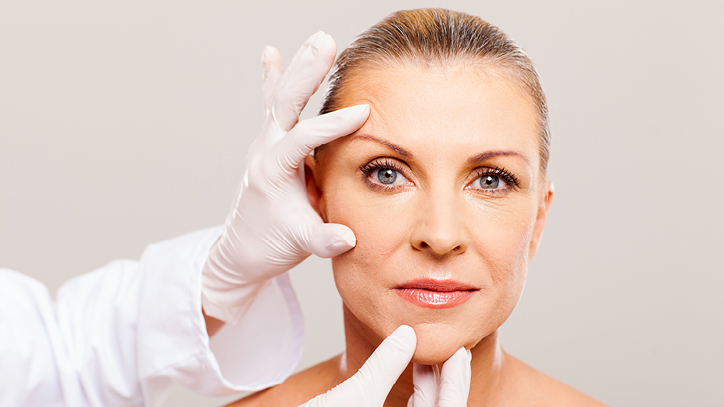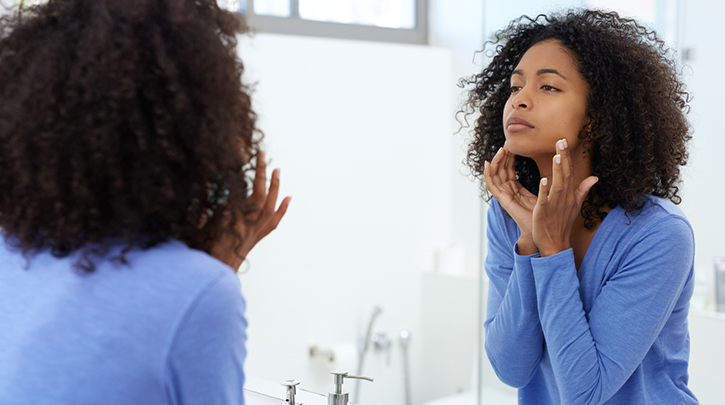What does youthful skin look like?
The answer is more intuitive than we might imagine, and it goes far beyond the presence of sagging skin and wrinkles. Our perception of skin age is also highly influenced by its texture — there’s a reason that we might see scars, lines, or irregular bumps, and connect them with questions of skin health and age. And though this effect varies geographically and across skin color and gender, the general trend is the same. Our image of healthy, youthful-looking skin, that image excludes the lines, lumps, dips, and dots that tend to come with natural collagen and elastin loss, and prolonged exposure to light and pollution.
Texture is the first among the 3 Ts of facial anti-aging: Texture, Tone, and Tightness.
The relationship between skin texture and perception of age and health is extremely relevant for medical aesthetics professionals. The desire to look as young as they feel is among the top 3 reasons why patients seek out aesthetic treatments. Skin tone and texture is a key concern for 71% of the population, according to a consumer survey by the American Society for Dermatologic Surgery, and problems related to uneven texture and tone are among the most common causes for visits to aesthetics clinics. Some especially hard-to-treat conditions, such as rosacea or acne scarring, can be devastating for patient quality of life.
Acne Scars
Scar reduction is a highly sought-after treatment, in large part due to the noticeable nature of this condition. Acne scars in particular are difficult textural irregularities to cover up with makeup or clothing. They often occur alongside discoloration in highly visible facial areas like the cheeks and forehead. Combined, these characteristics of scars can have the effect of immediately aging a person’s appearance, causing them to be perceived as unhealthy or unhygienic, especially given the stigma associated with acne among young adults.
In many cases, these scars can be the only strong sign of skin aging for young adults who would otherwise have youthful looking skin; this dissonance between the presence of visible textural irregularities and the absence of wrinkles and aging spots can contribute to a strong sense of anxiety around their physical appearance.
According to one 2015 study of acne scar patients, acne scars have a significant negative effect on the quality of life of young adults. Among study subjects, 36% were self-conscious of their acne scars, 24% felt that their acne scars affected their social activities, and 26% of them were willing to trade one year off their life to have scar-free skin. Because of the tremendous impact of acne scarring on patient quality of life, it’s no surprise that demand for scar reduction treatments continues to grow.
Stretch Marks
Aesthetics patients are also interested in treatment for another form of scarring: stretch marks. Stretch marks are an incredibly common form of skin scarring, affecting 90% of pregnant women, 70% of adolescent females, and 40% of adolescent males. Despite their ubiquity, stretch marks are a daily source of immense anxiety and insecurity.
According to a 2011 study of 500 women aged 18-34 conducted by Wakefield Research, 74% of women feel self-conscious about scars and stretch marks, and 69% of women with stretch marks are eager to get rid of them. In that same study, 74% of subjects indicated that they consider hiding their stretch marks when picking out clothing, and 20% of subjects (one in five) reported avoiding intimacy due to concerns about their appearance related to scars and marks.
Rosacea
Along with scarring, rosacea — and its accompanying bumps, redness, and irritation — presents another persistent problem for aesthetics consumers.
Studies of rosacea patients show that 75% of subjects suffering from the condition report lowered self-esteem, 70% report embarrassment, 69% report frustration, and over 50% report feeling “robbed of pleasure or happiness,” all associated with their rosacea symptoms. One 2016 study saw that subjects with severe rosacea were nearly twice as likely to suffer from anxiety or depression than those without rosacea.
Textural Treatments
What can medical aesthetics professionals do to respond to high patient demand for textural improvement treatments?
Skin resurfacing treatments are proven to address these mild to severe textural issues. With the right device, the right skin resurfacing treatment can make a world of difference for patients suffering from these conditions. But many traditional skin resurfacing devices can cause more damage than they’re worth by putting patients through uncomfortable procedures with lengthy downtimes.
Patients are more inclined to try non-invasive, low-stress aesthetics solutions, compared to more intensive or expensive treatments with long recovery times. Versatile and comfortable skin resurfacing devices with low downtimes are the key to delivering these high-quality, high-satisfaction, in-demand treatments to improve skin texture for overall facial anti-aging.
Anti-aging is a key pillar of aesthetic medicine. Get the information you need to push your practice even further! Stay tuned for the upcoming second installment in this series on the 3 Ts of facial anti-aging: Texture, Tone, and Tightness.
Practice Enhancement Tips





